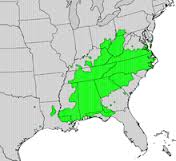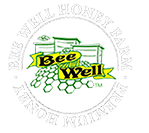Estimated reading time: 1 minute
The media buzz currently centers around a healthier style of living and making good food choices. Local, raw honey is not only a great food choice but can also be used for beauty treatments and health care.
honey is not only a great food choice but can also be used for beauty treatments and health care.
Bee Well Honey offers several varieties of honey. All of our honey is raw and unpasteurized.
Our Wildflower Honey is made from a variety of blooming plants, trees, and bushes in our region. Tulip Poplar, Holly, Maple, Blackberry, Vetch, and others give our local Wildflower honey a rich smooth taste.
We have local seasonal varieties in years that the bees and the weather cooperate. The Sourwood trees blooming along the mountainsides provide our raw Sourwood Honey. This variety is limited in supply and highly sought after by local honey enthusiasts.
Our southeast regional honey choices include Orange Blossom Honey and Tupelo Honey. Each has a distinctive taste and add an extra splash of flavor to your hot coffee or tea.
All of our honey products are raw, natural, 100% pure honey.
Most honey lovers in our local region are familiar with Sourwood Honey. But what is it exactly and where does it come from ?
Along the Southern range of the Appalachian Mountains, we find the Sourwood tree . Named thus for the sour taste of the tree leaves. This tree of small stature produces one of the most sought after honey’s in the world. White clusters of bell shaped flowers appear in late June/early July. The best nectar flow is from trees at the higher elevations. Trees in the lower piedmont regions may bloom but rarely produce enough nectar for a honey crop. Sourwood Honey is consumed mostly by local honey connoisseurs as the demand always exceeds supply.
We are able to enjoy Sourwood Honey because the trees bloom at a time that not many other nectar giving plants are in bloom and also because the honeybee practices “flower fidelity”. Once the bees find a good source of nectar, they will work that flower until it is finished. You may have the odd few bees that will work other area flowers but the majority will be the target crop.
Therefore, when the Sourwood tree starts to bloom, We move the bees to the area and put empty honey storage boxes on the hives. After the sourwood bloom is finished, the full boxes of honey are taken to the honey house and extracted. Southern regions tend to have a sourwood color that is a little darker than the almost clear sourwood honey made at the highest elevations.
Sourwood Honey is sought after by many but the supply is always limited and usually available only for a short time. If you like the sweet spicy buttery taste of Sourwood, get it while you can.


